
Station Name: WHEATHAMPSTEAD
|
| Date opened: | 1.9.1860 |
| Location: | On the east side of Station Road south of the junction with Cory-Wright Way |
| Company on opening: | Hertford, Luton & Dunstable Railway |
| Date closed to passengers: | 26.4.1965 |
| Date closed completely: | 26.7.1965 |
| Company on closing: | British Railways (Eastern Region) |
| Present state: | The west end of the platform up to the Station Road bridge and a short section at the east end have been demolished. The remainder of platform has been restored as a leisure area for the village. This includes two new station signs, four interpretation boards and new access steps up to the platform. Following the first stage of restoration 40 feet of track has been laid with an openn wagon standing on it and a waiting shelter has been built on the platform. The eventual airm is to turn the station site into an open air museum. |
| County: | Hertfordshire |
| OS Grid Ref: | TL178143 |
| Date of visit: | May 1968, June 1975, May 2006 & 27.12.2010 |
Notes: Wheathampstead station opened with the second section of the Hatfield to Dunstable line on 1st September 1860. It had a single platform (identical in construction to the platform at Luton Hoo) on an embankment on the up side of the line. There was a large 'L' shaped two-storey station house on a forecourt at the junction of Station Road and Codicote Road with a single-storey booking office alongside. From the rear of the booking office a covered stairway led up to the back of the platform. There was a timber building overhanging the back of the platform, which incorporated waiting rooms, and it had a timber canopy over the platform. In 1881 the booking office was relocated to the platform building. The platform originally had square stone capping, but this was later replaced with overhanging concrete edge stones. In 1918 the platform was covered with concrete slabs to increase its height. There was a moderately-sized goods yard on a lower level, also on the up side of the line to the west of Station Road bridge. The entrance was at the end of Station Road with a weigh office and weighbridge just inside the entrance. As can be seen on the three maps below, the yard was gradually extended to include additional facilities. In its final form, it comprised a loop (giving access to the yard from both directions) and four sidings (three long and one short). The northernmost siding served the coal yard, and the middle siding passed through a brick shed at the east end of the yard, with a short siding from it at the west end serving a cattle dock and pens. This was also known as the 'dung road' where the wagons of dung from London Zoo were unloaded. The cattle dock was partially covered to keep products from the Murphy Chemicals factory dry. The southern siding ran in front of the goods shed. Access to the yard was controlled by an 18-lever signal box on the down side, opposite the loop, which replaced an earlier ground frame at the station. The box was closed in 1921 and replaced once again with a ground frame in the same position. Points giving access to the yard from the east were removed in 1963. There was another entrance into the goods yard from Lower Luton Road, with a second weigh office and weighbridge here, but this was taken out of use c.1930, the office being retained for use by a coal merchant. There were also stables here to accommodate the horses used for shunting. The most famous regular user of the station was the playwright George Bernard Shaw, who used to walk or cycle there from Shaw’s Corner - his home in Ayot St Lawrence -to catch the train into London. He was a very bad timekeeper, and his chauffeur often had to travel on ahead to make sure that the train waited for him. Shaw regularly complained about the smell from a rubbish dump at Blackbridge a mile to the east of Wheathampstead, and in a letter to the council he liked the smell to that of "Stromboli and hell" The station closed to passengers on 26th April 1965, but the goods yard remained open until 26th July that year with a private siding remaining in use after that date. Goods traffic continued to pass through until November 1965 when a connection with the Midland line at Luton opened. This made the track east of Luton redundant. The sidings at Wheathampstead were lifted almost immeditaely and were stacked in the yard awaiting collection. These were removed by a demolition train from Hatfield on 23rd October 1966. The final length of track at Wheathampstead was lifted in March 1967. The points at Blackbridge were removed on 19th March 1967 and the line was relaid straight into the sidings. Blackbridge sidings remained open until closure of the landfill site on 24th May 1971. Some of the platform edge stones were removed at this time but were left lying on the ground nearby.
In November 2009, after 40 years of neglect, a group of local volunteers, backed by the Parish Council and supported by the Wheathampstead and District Preservation Society, began a programme of clearance and restoration of the platform. Their aim was to develop the site as a area for picnics, art exhibitions, an open-air classroom and a visitor attraction. It will also form part of the Wheathampstead Heritage Trail currently under development. As part of the first phase of the project, their goal was to clear the track bed and lay a grass or other suitable surface. They also planned to restore the platform with paving slabs to recreate the look and feel of the original station, and to reproduce two station signs and hang them from their original supports. Two benches, as close as possible to the originals, would be added and painted in the appropriate colour. The railings would be cleaned and painted. An interpretation board with old photographs and a history of the line was also proposed. Access to the site required a new flight of steps up the embankment. Phase 1 of the project was completed in time for the 150th anniversary of the station on 1st September 2010. The formal 'reopening' ceremony was attended by the Mayor of St Albans, Councillor Maxine Crawley. As part of Phase 2 there are plans to relay 40 feet of track. It has been promised that track recovered from the stretch between Luton and Dunstable, which was lifted in late 2010 prior to building the Luton - Dunstable busway, will be made available. It is also hoped to establish the connection with George Bernard Shaw by commissioning a sculpture of the author, seated, waiting for a train, so that visitors can have a photograph taken of them sitting beside him. Additional source: St. Albans Review 6th August 2010. See also Wheathampstead.net, the village and parish web site web site. Click here for pictures of Blackbridge sidings BRIEF HISTORY OF THE LEIGHTON BUZZARD TO WELWYN GARDEN CITY LINE Nothing was done until 1844 when a meeting was held in Luton. By now there was mounting opposition to the scheme which would have to cut across the 'Great Moor', a large area of undeveloped common land close to Luton. This angered George Stephenson who vowed that Luton would not get a direct railway connection to London as long as he lived.
The double-track Dunstable branch opened on the 1st June 1848 with a terminus on the west side of Watling Street and no intermediate stations (although a station at Stanbridgeford was opened in November 1860). By 1851 Luton was the largest town in Bedfordshire without a railway or canal to cater for its increasing industrial growth. In 1853 the GNR was approached to build a branch to their line at Hatfield, but this was turned down. On 3rd July 1854 the Hertford & Welwyn Junction Railway received parliamentary authority to build a line from the Eastern Counties Railway at Hertford to the GNR at Digswell, and on 30th September 1854 there was a proposal to extend this line across the GNR to Luton and Dunstable linking three established railway companies (ECR, GNR & LNWR). Not wanting to be left out, the GNR offered to work the line between Hatfield and Luton although it was not prepared to provide any finance.
The Luton, Dunstable & Welwyn Junction Railway Act was passed on the 16th July 1855 authorising a junction with the LNWR at Dunstable and a triangular junction with the GNR at Digswell together with a bridge over the GNR to allow through running over the H & WJR between Hertford and Dunstable. All three companies were authorised to work the line. A single track was built (with the intention of doubling in the future) with construction starting on 16th October 1855 which, in Luton, was designated as a half-day public holiday as residents had waited so long to get a railway! Unfortunately the company was unable to raise sufficient capital to purchase all the necessary land between Welwyn and Luton. The LNWR refused to help by leasing the line although they did offer to work the line for two years after completion. In an attempt to save the line an amalgamation between the H & WJR and the LD & WJR was proposed. This was bitterly opposed by a minority of disgruntled Luton shareholders who claimed that passengers would be forced to travel to London via the Eastern Counties main line at Hertford rather than using the shorter GNR route via Hatfield. The amalgamation and formation of the Hertford Luton & Dunstable Railway was passed at a heated meeting on 26th January 1858, but although both lines were completed and approach embankments were constructed, the linking bridge was never built due to restrictions imposed by the GNR. The Hertford line was opened to passenger traffic on 1st March 1858 between Hertford (Cowbridge) and a short-lived station at Welwyn Junction on the GNR.Work on the Luton line had been progressing during the amalgamation negotiations, and at a shareholders’ meeting on 6th August 1857 it was announced that the first section of the line between Luton and Dunstable was ready for goods traffic. Several goods wagons were fitted with seats to take shareholders along the line. The line was initially inspected on 18th March 1858 and, after a turntable was provided at Leighton at the request of the Board of Trade inspector, the line was passed a month later, with a goods service running from 5th April 1858 and a passenger service from 3rd May 1858; large crowds travelled to Luton station for a day to take part in the celebrations and ride on the new line. Initially there were five trains in each direction on weekdays only; two of these were later extended to Leighton. At this time Luton trains used a new station in Church Street, Dunstable, with through trains to Leighton bypassing the LNWR station which was at a lower level. Initially an end-on connection had been proposed which would have required raising the level of the road by three feet to provide a level crossing. This was rejected by Parliament, so a diversion was authorised in 1856 taking the new line over Watling Street, rejoining the Leighton line to the west of Dunstable station. A proposed new station at the junction was not built at that time, although through trains from Luton could back into the LNWR station if required.
There was a junction with the GNR at Welwyn, but no station was provided, and the H & WJR station at Welwyn Junction was closed with trains on both lines terminating at Hatfield. In 1864 there were six daily down trains between Hatfield and Leighton, with five up trains. There were a further two down trains between Luton and Leighton in the early morning with two up trains in the afternoon and evening and one train in each direction between Hatfield and Dunstable. On Sundays there were two down trains between Hatfield and Dunstable, with one up train with two short-running services. The Hertford, Luton & Dunstable Railway was absorbed by the GNR under the Great Northern Railway Act of 12th June 1861. This gave the GNR exclusive rights to operate the line, although a clause in the Act gave the LNWR joint rights to use the section between Dunstable and Luton. In December 1868 new parallel lines into Hatfield were brought into use for the branch services, and the earlier junctions were removed in January 1869. Although built as single track throughout, it was always the intention that the line would be doubled, and sufficient land was acquired over some of the route. In the late 1890s the Great Northern line between Digswell and Hatfield was widened with a new track being provided for Dunstable trains, and the old Dunstable line becoming the new down slow main line In 1890 passenger numbers were sufficiently high for doubling the line between Luton and Dunstable. This was authorised by Parliament in 1891, but progress was slow and it did not open until 10th September 1899. Proposals to double the remainder of the line brought a lukewarm response from the GNR. Passenger numbers increased through the 1890s, and by 1900 there were nine trains in each direction between Luton and Dunstable, with eight in each direction between Luton and Dunstable and seven between Dunstable and Leighton.In 1920 the new town of Welwyn Garden City was founded by Sir Ebenezer Howard, following his previous experiment in Letchworth Garden City. Howard had called for the creation of planned towns that were to combine the benefits of the city and the countryside and to avoid the disadvantages of both. During the construction of the new town, temporary contractors’ halts were provided at the junction of both the Hertford and Luton lines, close to the site of the earlier Welwyn Junction station. The halt on the Luton line became a public station on 14th August 1920, remaining in use until 20th September 1926 when the new Welwyn Garden City station was opened. Through the 20th century the line remained very profitable, due in part to the large number of private sidings, in particular those serving chalk quarries near Dunstable, the sand and gravel pits around Leighton Buzzard and, later, Vauxhall Motors in Luton. Following the 1923 general grouping the Dunstable branch became part of the London Midland & Scottish Railway while the Hatfield to Dunstable line was part of the London & North Eastern Railway. This split continued after nationalisation in 1948 with British Railways Eastern Region being responsible for the Hatfield line as far as Harpenden down distant signal, with the remainder of the line coming under the London Midland Region. On 2nd April 1950 the boundary was adjusted, transferring Harpenden (East added on 25th September 1950) to the LMR. Diesel-hauled freight trains started replacing steam in February 1959, and passenger trains in June 1959, the latter being replaced with DMUs in 1962.
The line remained open for freight traffic until 1st January 1966 after which it was cut back to Grovebury sidings south of Leighton Buzzard, serving sand and gravel pits, until final closure on 5th December 1969. Track-lifting was piecemeal, starting at Dunstable in late 1968 but not reaching Stanbridgeford until July 1969. Track-lifting west of Stanbridgeford started in February 1970 and was not completed until February 1971. National Cycle Route 6 now follows what is now known as the Sewell greenway between Stanbridgeford and Dunstable.
The Hatfield line was scheduled to close on 6th January 1965 as part of the Beeching cuts. Closure was deferred following local objections - but only until 24th April when the last 'Skimpot Flyer' carried a wreath and a large number of passengers on a farewell journey along the line: it returned to Hatfield almost empty! The line remained open for freight and for goods traffic to Luton Bute Street until 26th June 1967. After that date the line between Luton and Dunstable was singled and retained to serve the Dunstable Cement works at Houghton Regis, with a new connection from the Midland main line at Luton opening in November 1965. The east end of the line was also retained for rubbish trains bound for Blackbridge sidings east of Wheathampstead. Track lifting on the remaining section between Blackbridge and Luton started at the Eastern Region/London Midland region boundary west of Harpenden East station on 8 May 1966 towards Luton and from 26th February 1967 towards Blackbridge. Blackbridge sidings closed in May 1971, and much of the track between Welwyn Garden City and Wheathampstead now forms the Ayot Greenway cycleway and footpath, with the the trackbed between Luton Hoo and Harpenden is incorporated into the 50-mile Lee Valley Walk.
In the early 2000s the South Midland Railway Group set up a base in the ex-Bedford Trucks sidings on White Lion Retail Park at Dunstable and planned to form a transport heritage centre. The site was linked to the mothballed line to Luton via an illegally reinstated connection which the group hoped to reopen in the long term. The lease of the yard, however, was not secured, and in July 2001 it was reported that the group was in dispute over their occupation of the site. The project ended when the illegal connection to the Luton to Dunstable branch line was removed in March 2001, and vehicles were removed in July 2001 and January 2002; the remaining railway vehicles on the siding were finally cut up by the council, and the tracks were lifted in 2005. In December 2003 the Department for Transport approved the Transport & Works Act submission for a £85m scheme to convert the line into a guided busway. Planning permission and a Transport & Works Order were granted in November 2006, and the Transport Minister gave the go-ahead in August 2008. Tenders for its construction were sought in July 2009.
Sources: Wikipedia (Leighton Buzzard station) and the Hatfield, Luton & Dunstable Railway by G & S Woodward (1977). Published by Oakwood Press ISBN 978-0-853614-58-6. For further reading see Hertfordshire's lost railways by Keith Scholey ISBN ISBN 1 84033231 X and Bedfordshire's lost railways by Keith Scholey ISBN ISBN 184033 271 9 and Branch Line to Dunstable by Sue & Geoff Woodward (2008) Published by Middleton Press ISBN 978-1-906008-27-7. Other web sites: Lost lines - features photos taken along the line between 1989 - 2007. BBC Beds, Herts & Bucks web site. Disused Railways web site. Click here to see an aerial view of the whole Leighton Buzzard - Dunstable line on Google Earth. All the stations are shown. Prepared by Mark Percival. Tickets from Michael Stewart , route map drawn by Alan Young, LNER timetable To see other stations on the Leighton Buzzard - Welwyn Garden City line click on the station name: Leighton Buzzard, Stanbridgeford, Dunstable North, Dunstable Town, Chaul End, Luton Bute Street, Luton Hoo, Harpenden East, Ayot, Welwyn Garden City Halt (first station) & Welwyn Garden City (second station) |
||||||||||||||
Wheathampstead Station Gallery 1 July 1909 - 1967
old11.jpg)

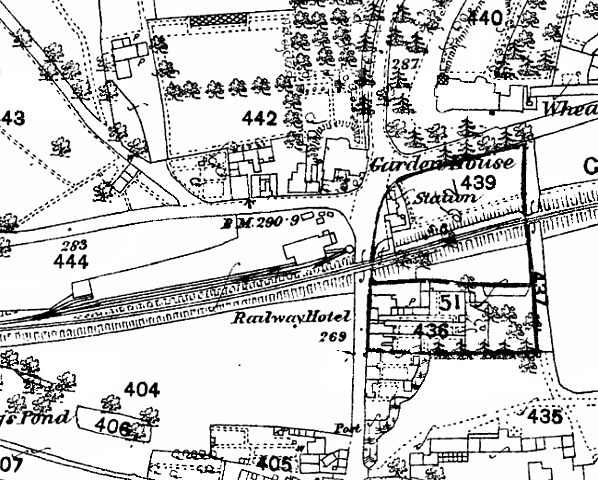
old10.jpg)
Copyright photo from John Alsop and Ian Baker collections
old4.jpg)
old3.jpg)
Copyright photo by H C Casserley
old9.jpg)
old2.jpg)
old6.jpg)
old14.jpg)
Photo bu David Pearson
47.jpg)
Looking north along Station Road, Wheathampstead during demolition of the bridge c.1967.
Click here for Wheathampstead Station Gallery 2
Late 1960s - October 2014
| Last updated: Friday, 26-May-2017 10:00:07 CEST |
© 1998-2014 Disused Stations
|
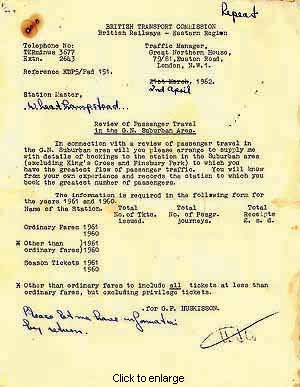





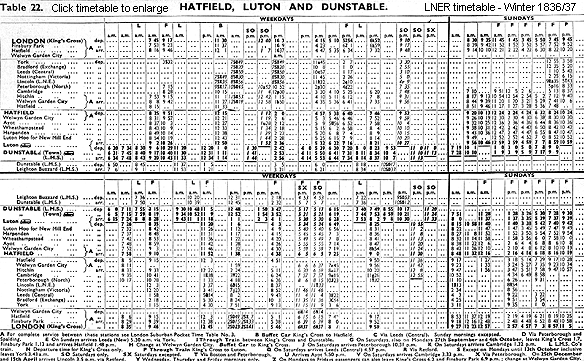


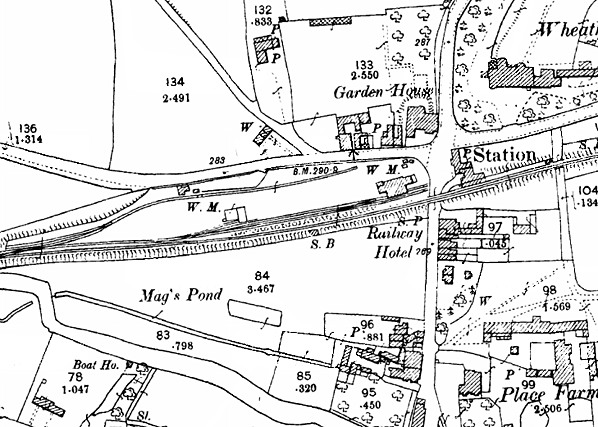
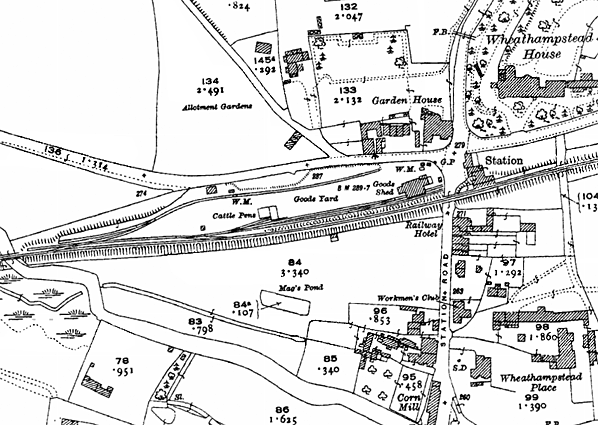

 Home Page
Home Page